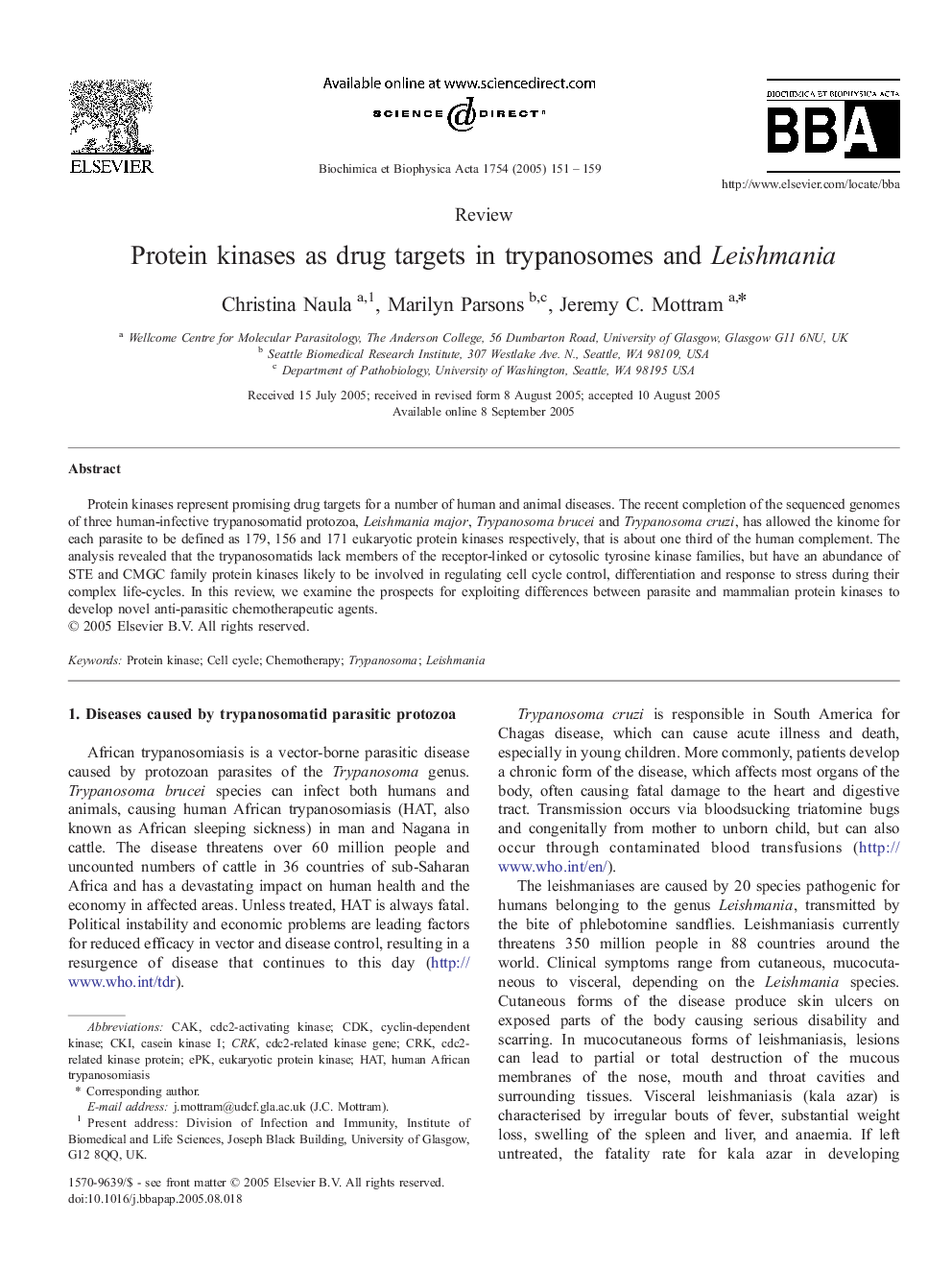| Article ID | Journal | Published Year | Pages | File Type |
|---|---|---|---|---|
| 9745081 | Biochimica et Biophysica Acta (BBA) - Proteins and Proteomics | 2005 | 9 Pages |
Abstract
Protein kinases represent promising drug targets for a number of human and animal diseases. The recent completion of the sequenced genomes of three human-infective trypanosomatid protozoa, Leishmania major, Trypanosoma brucei and Trypanosoma cruzi, has allowed the kinome for each parasite to be defined as 179, 156 and 171 eukaryotic protein kinases respectively, that is about one third of the human complement. The analysis revealed that the trypanosomatids lack members of the receptor-linked or cytosolic tyrosine kinase families, but have an abundance of STE and CMGC family protein kinases likely to be involved in regulating cell cycle control, differentiation and response to stress during their complex life-cycles. In this review, we examine the prospects for exploiting differences between parasite and mammalian protein kinases to develop novel anti-parasitic chemotherapeutic agents.
Keywords
Related Topics
Physical Sciences and Engineering
Chemistry
Analytical Chemistry
Authors
Christina Naula, Marilyn Parsons, Jeremy C. Mottram,
